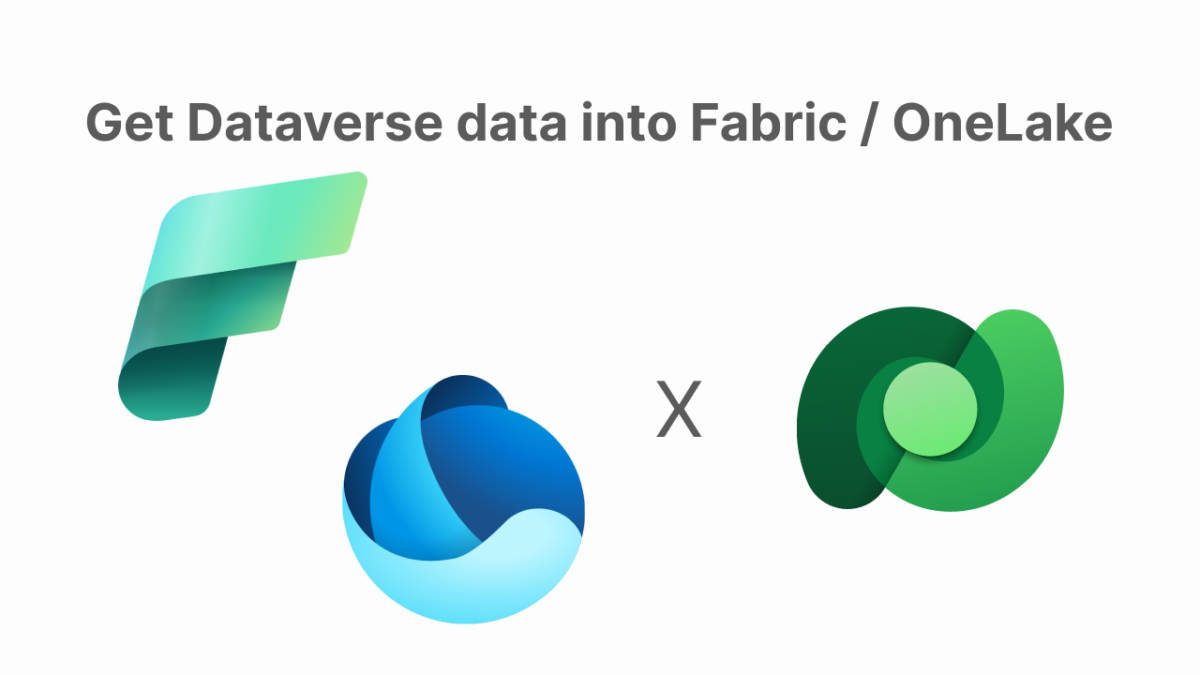
Simplifying Data Management: Dataverse and Microsoft Fabric Integration
Introduction
In the ever-evolving landscape of data management, organizations face numerous challenges. From data silos to inefficient workflows, the need for streamlined solutions has never been more pressing. Integrating Dataverse with Microsoft Fabric emerges as a transformative approach, enabling businesses to harness their data's full potential. This article explores the details of this integration, highlighting its benefits and practical applications.
Understanding Dataverse
Dataverse serves as a cloud-based, low-code data platform, facilitating the storage and management of data across various applications. Its core features include structured data storage, robust security measures, and seamless integration capabilities. By utilizing Dataverse, organizations can centralize their data, ensuring consistency and accessibility across departments.
Exploring Microsoft Fabric
Microsoft Fabric is an end-to-end analytics platform that unifies data integration, engineering, warehousing, and real-time analytics. Its architecture comprises components such as Data Factory, Data Engineering, Data Warehousing, Real-Time Analytics, Data Science, Data Activator, and Power BI, all hosted on a lake-centric SaaS solution. This unified approach simplifies data workflows and enhances analytical capabilities.
The Need for Integration
Why Integrate Dataverse with Microsoft Fabric?
Isolated data systems often lead to silos, hindering comprehensive analysis and decision-making. Integrating Dataverse with Microsoft Fabric addresses these challenges by providing a cohesive data environment. This integration facilitates seamless data flow, enabling organizations to derive actionable insights efficiently.
Use Cases for Integration
Common use cases include:
- Real-Time Reporting: Combining data from Dataverse with analytics tools in Microsoft Fabric for up-to-the-minute insights.
- Data Warehousing: Utilizing Fabric's capabilities to create a centralized data repository from Dataverse data.
These scenarios illustrate the practical benefits of integration in real-world applications.
Setting Up the Integration
Prerequisites for Integration
Before embarking on the integration journey, organizations must ensure they have the necessary prerequisites in place. This includes:
- Access to Both Platforms: Valid subscriptions for Dataverse and Microsoft Fabric.
- Technical Expertise: Familiarity with data management concepts and tools.
Step-by-Step Integration Process
Step 1: Log into Microsoft Fabrics to confirm you have Microsoft Fabric Capacity Licence, if not you can opt in for a 60 days Microsoft Fabric trial capacity
Step 2: Sign into Power Apps
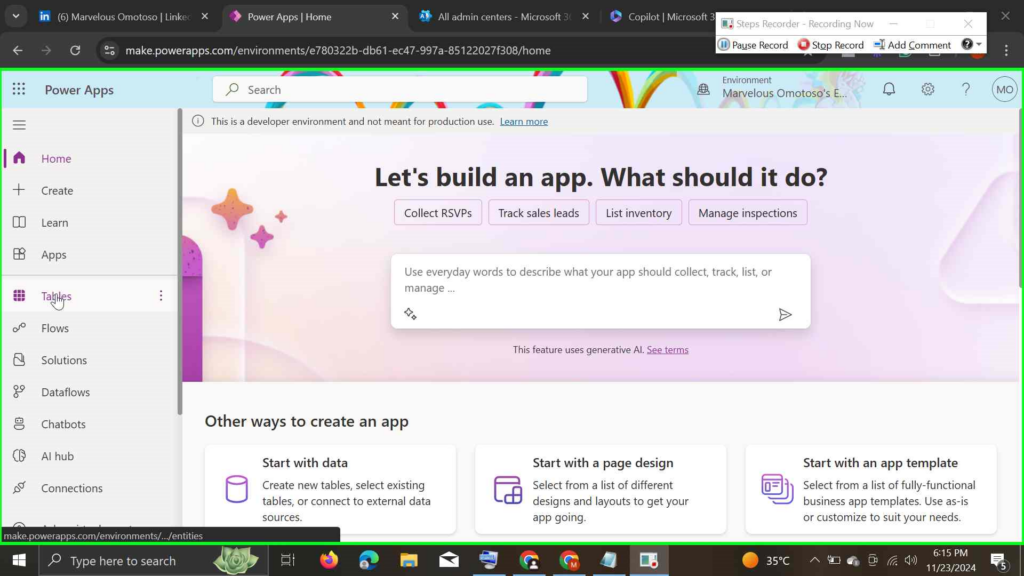
Step 3: Select the environment you want, select Tables on the left navigation pane, and then select Analyze > Link to Microsoft Fabric on the command bar.
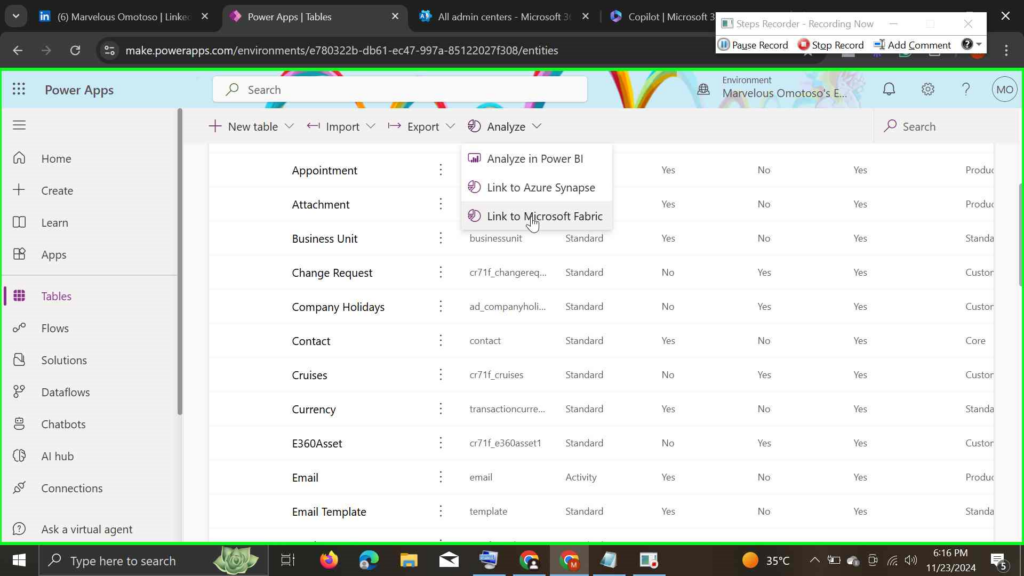
Step 4: If you're linking to Fabric for the first time, a wizard appear. The wizard validates your Fabric subscription settings the first time
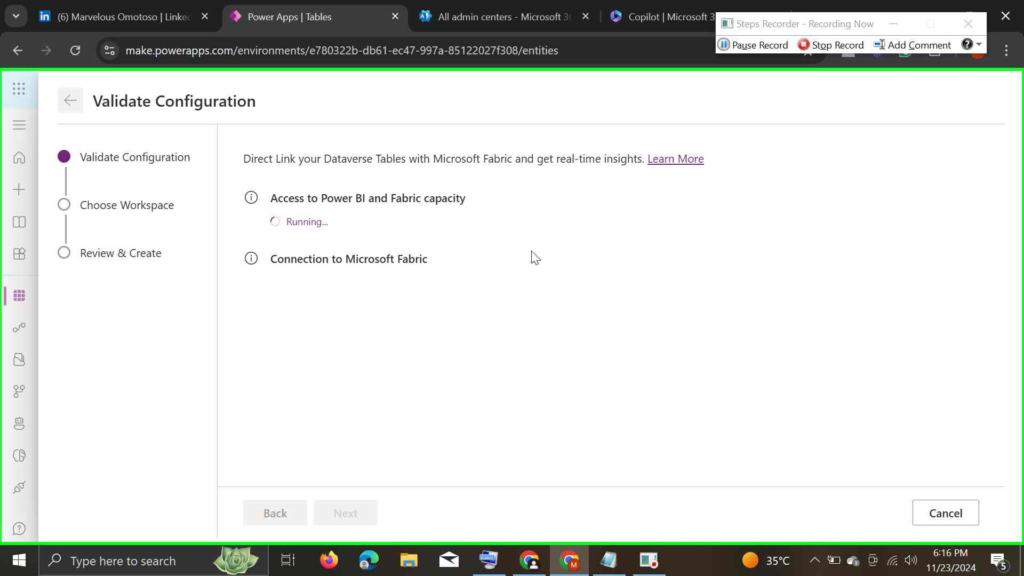
If needed, the wizard asks you to create a one time connection to Microsoft Fabric within the same step. This connection is needed to enable Fabric and Dataverse services to securely access data. You need to sign in and then save the connection to proceed.
The wizard prompts you to either select an existing Fabric workspace or create a new one. After establishing a connection and either creating or choosing a Fabric workspace, be sure to save your connection.
And fianlly, when complete, Fabric lakehouse opens in a separate browser tab.
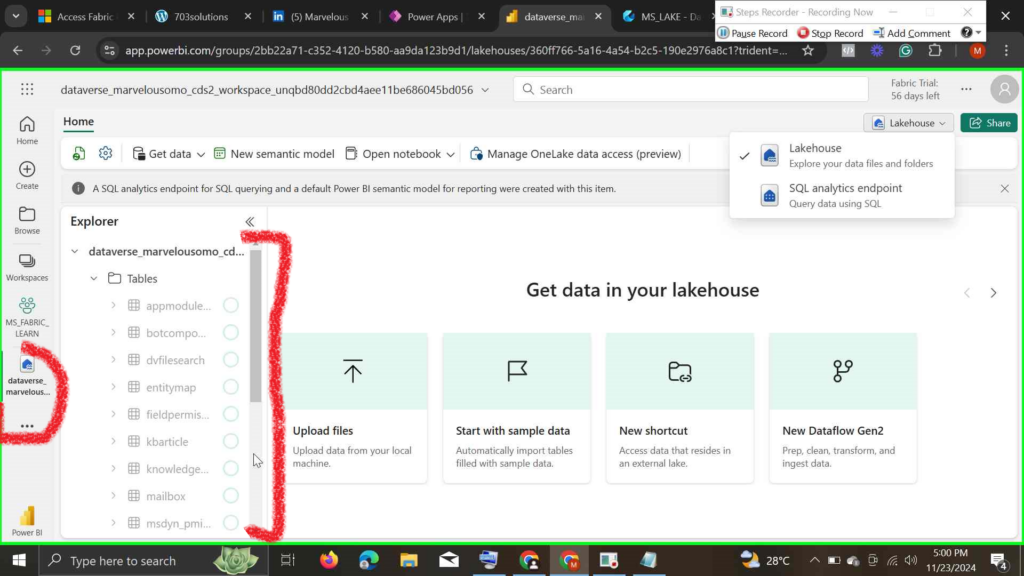
Data Flow and Synchronization
The integration ensures real-time data movement between Dataverse and Microsoft Fabric. As data updates occur in Dataverse, changes are reflected in the lakehouse automatically, maintaining data consistency and integrity across platforms.
Benefits of Linking Dataverse to Microsoft Fabric
- Enhanced Data Integration
By linking Dataverse with Microsoft Fabric, you can bring together siloed data sources into a unified platform, streamlining data processing and analysis.
- Real-Time Analytics Capabilities
Gain real-time insights with tools like Power BI, enabling faster and more informed decision-making across your organization.
- Scalability for Enterprise Use
The integration ensures that your data operations can scale as your organization grows, accommodating more users and larger datasets.
- Streamlined Business Operations
Automation and analytics become more accessible, improving overall efficiency and reducing operational costs.
Troubleshooting Common Issues
Common Integration Challenges
Despite the benefits, organizations may encounter challenges during integration. Common issues include:
- Data Mismatches: Discrepancies between data formats can lead to errors.
- Connectivity Problems: Network issues may disrupt data flows.
Solutions and Workarounds
To address these challenges, organizations can:
- Standardize Data Formats: Ensure consistency across platforms.
- Monitor Connectivity: Utilize monitoring tools to detect and resolve connectivity issues promptly.
Future Prospects
Microsoft continues to enhance the capabilities of Dataverse and Microsoft Fabric. Upcoming features aim to further simplify data integration and analytics, providing organizations with more powerful tools to manage and analyze their data effectively.
Conclusion
Integrating Dataverse with Microsoft Fabric offers a myriad of benefits, from enhanced data accessibility to improved analytics capabilities. As organizations navigate the complexities of data management, embracing this integration can lead to more streamlined operations and informed decision-making. The future of data management is bright, and those who adapt will undoubtedly thrive in this dynamic environment. To learn more about integrating Power Apps with Microsoft Fabrics, check out this Microsoft Documentation on Link your Dataverse environment to Microsoft Fabric and unlock deep insights
